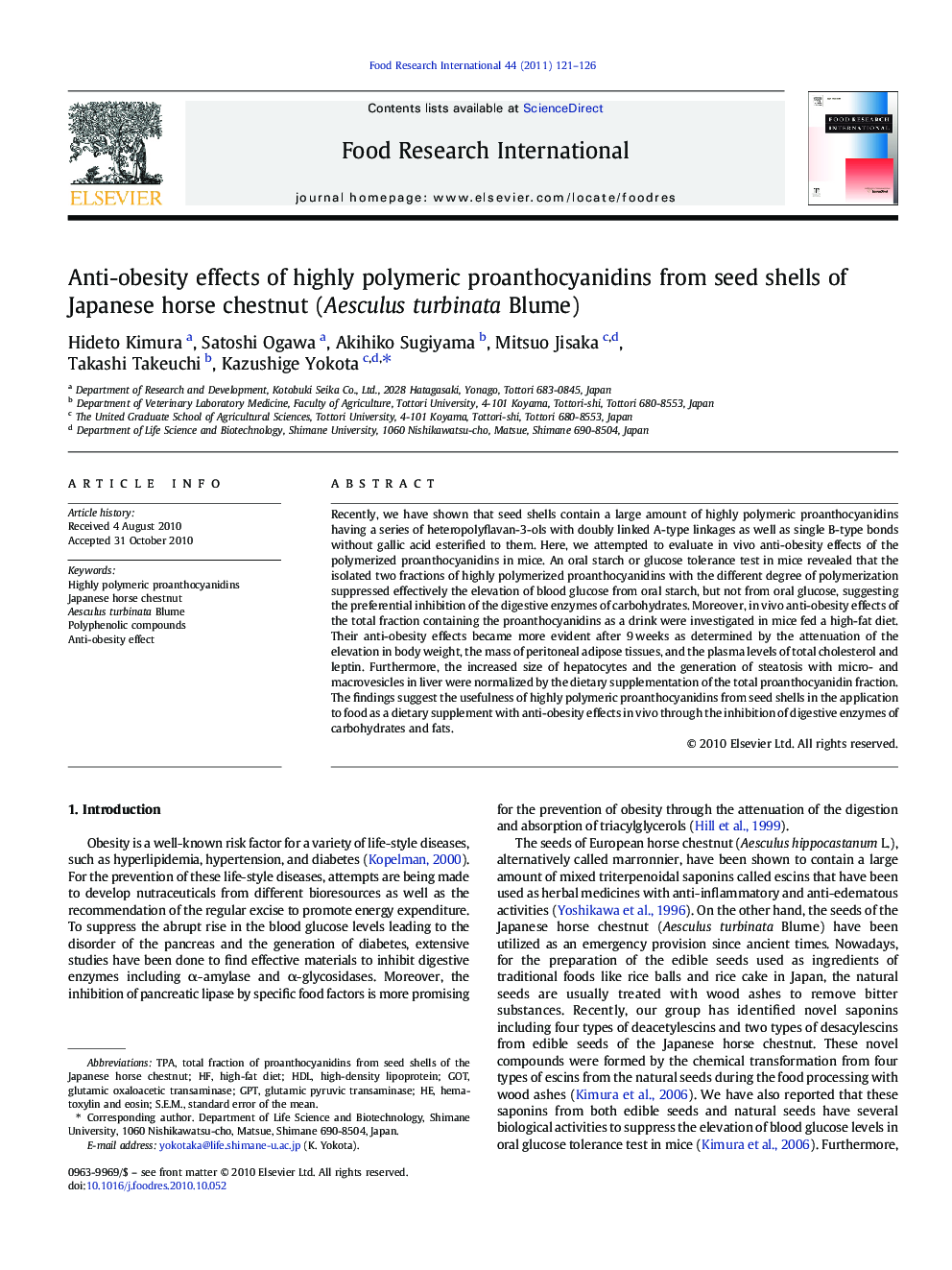| Article ID | Journal | Published Year | Pages | File Type |
|---|---|---|---|---|
| 6399920 | Food Research International | 2011 | 6 Pages |
Recently, we have shown that seed shells contain a large amount of highly polymeric proanthocyanidins having a series of heteropolyflavan-3-ols with doubly linked A-type linkages as well as single B-type bonds without gallic acid esterified to them. Here, we attempted to evaluate in vivo anti-obesity effects of the polymerized proanthocyanidins in mice. An oral starch or glucose tolerance test in mice revealed that the isolated two fractions of highly polymerized proanthocyanidins with the different degree of polymerization suppressed effectively the elevation of blood glucose from oral starch, but not from oral glucose, suggesting the preferential inhibition of the digestive enzymes of carbohydrates. Moreover, in vivo anti-obesity effects of the total fraction containing the proanthocyanidins as a drink were investigated in mice fed a high-fat diet. Their anti-obesity effects became more evident after 9Â weeks as determined by the attenuation of the elevation in body weight, the mass of peritoneal adipose tissues, and the plasma levels of total cholesterol and leptin. Furthermore, the increased size of hepatocytes and the generation of steatosis with micro- and macrovesicles in liver were normalized by the dietary supplementation of the total proanthocyanidin fraction.The findings suggest the usefulness of highly polymeric proanthocyanidins from seed shells in the application to food as a dietary supplement with anti-obesity effects in vivo through the inhibition of digestive enzymes of carbohydrates and fats.
